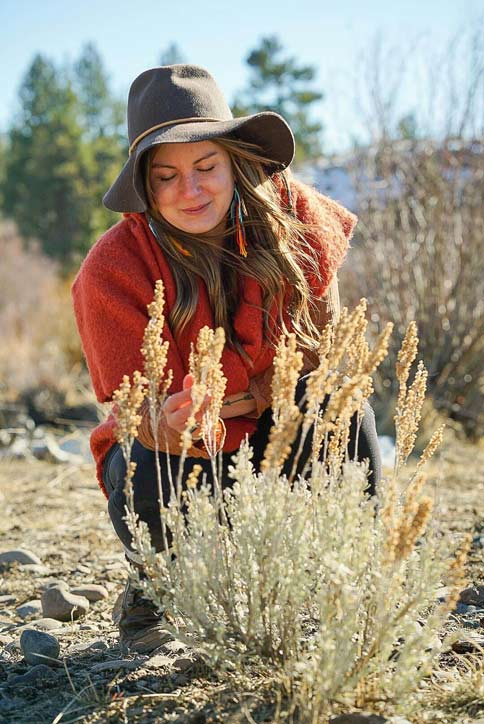Get connected to local plants and medicines promoting wellness.
Isn’t Mother Nature incredible? The elements, the seasons, the vibrant fall colors, and sweet springtime blooms are sources of constant wonder and delight. Along with that untamed beauty come flora and fauna that speak to the soul and comfort many ailments. The Sierra region is a mecca for natural remedies and the expert makers who forage, concoct, peddle, and teach about the abundant resources growing in this area we call home.
Mary McCallum is a clinical herbalist and owner of Sierra Roots Wellness, based in Truckee, who uses ingredients she finds from the foothills to higher elevation spots, and from local and small farms that grow organic herbs. McCallum appreciates the history and care that go into using native elements.
“Herbal medicine is something I love sharing with others in that it’s easy to use and can be as simple as growing [ingredients] in your home garden or picking up fresh or dried herbs at the grocery store,” she says. “All of our ancestors, at some point, or maybe still today, used herbs as food and medicine to help heal and strengthen our families. Herbal medicine is timeless and can be used in all life stages, making it accessible to all.”
The winter brings various ailments for which McCallum makes products to soothe. Her Wild Cherry Bark Syrup contains local raw honey, wild chokecherries, wild cherry bark, elecampane root, hyssop, marshmallow leaf and flower, mullein leaf, and rose hips. This concoction gives lungs relief and is crafted for respiratory illnesses, cough relief, and support during times of wildfire smoke exposure. Other favorites for this time of year include Respiratory Revival Tea, Respiratory Soothe Herbal Honey, Soothe the Nerves, and Calm & Collected Tea.
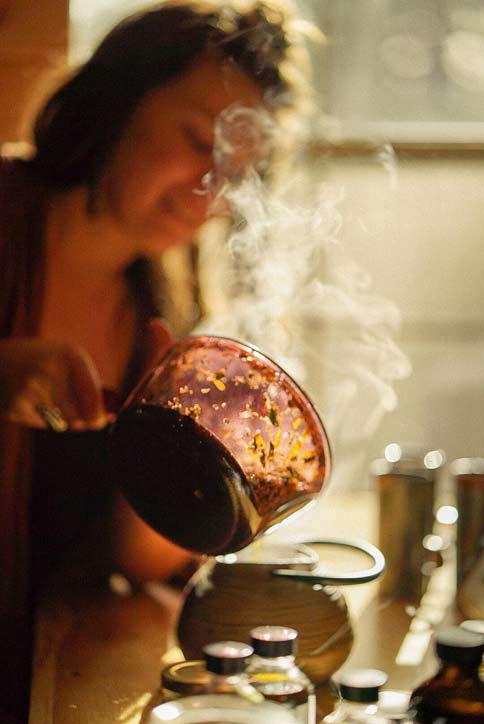
McCallum notes that during the holidays a lot of stress and grief can come up. To help, she created a product called Happy Heart Oxymel, made with apple cider vinegar, raw local honey, hawthorn berries, pink rosebuds, Hawaiian hibiscus flowers, cinnamon chips, and ginger root.
“It has herbs that are very supportive for the physical and emotional heart,” she adds. “People love to make herbal cocktails and mocktails with it for themselves and to support the family during gatherings.”
Health with Hemp
Sierra Nevada Hemp Co. in Carson City grows industrial hemp tested by the State of Nevada that complies with the requirement to contain less than 0.3 percent THC.
“You don’t get high from any of the product,” explains Mark O’Farrell, farmer and owner of Sierra Nevada Hemp. “We sell it in all the forms, but basically all of our products are high CBD with a tiny fraction of THC because they are made from a full-spectrum extract.”
Using a freezing-and-ultrasound process, O’Farrell is able to extract pure CBD without chemical solvents or altering the resin that comes from the flower. He uses the resin in various products, including Wholly Oil, which contains pure coconut oil and hemp.
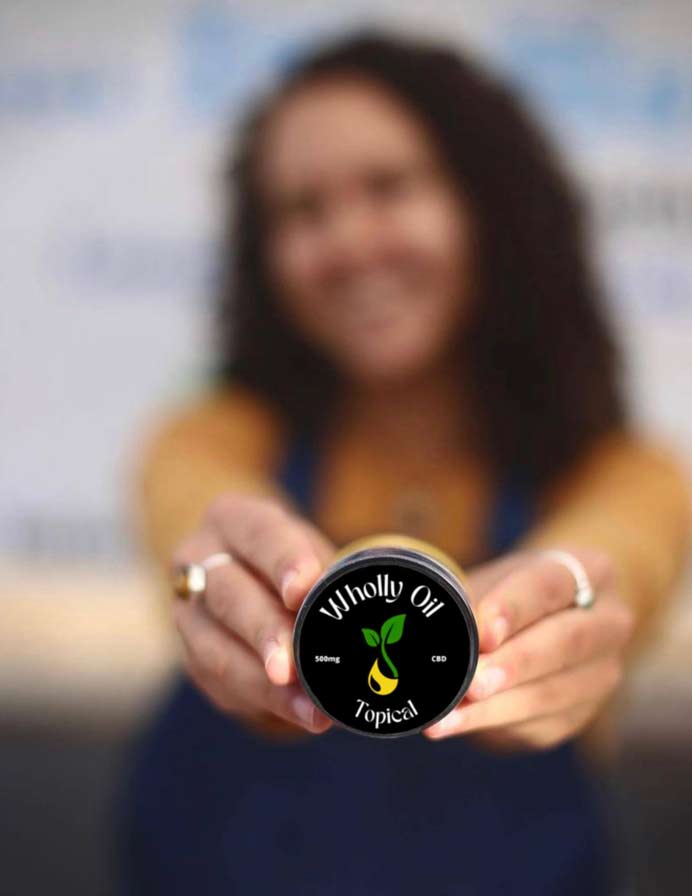
“It’s a really good topical for any joint or muscle pain, skin conditions, everything from gout to fibromyalgia,” he adds. “It’s highly anti-inflammatory, so when it’s on the skin, it works really well for inflammation.”
From Shingles to Gut Balance
Native only to this region and originally used by the Washoe Indigenous tribes, Lomatium dissectum is reputed to have antiviral, antibacterial, and antifungal properties. Elaine Brooks, owner of The Herb Lady in Sparks, says that products made with lomatium are some of her best sellers.
“Lomatium really helps with a lot of things,” she says. “COVID-19. Infections. I even had a lady with reappearing shingles who took it and it ended up stopping. I have it in tincture form, as a liquid, and it comes in alcohol for topical [use], or glycerin.”
Brooks hosts various classes inside her shop, including one of her favorites on gut health, where she offers advice on maintaining balance through diet and natural remedies.
“An unhealthy digestive tract can cause high blood pressure, high cholesterol, depression, and also diabetes because it throws your blood sugar off, and that brings a myriad of problems,” she explains.
She commonly helps folks by providing suggested probiotics, Ceylon cinnamon, and other agrarian products.
Medicine Making
Tellur Fenner of the Blue Wind School of Botanical Studies travels throughout the Western United States teaching about edible and medicinal plants. With a background as a plant researcher and educator visiting throughout all the major bioregions in the country, he says Reno-Tahoe is one of his busiest stops.
“Reno is popular because the classes fill up consistently, and there is so much diversity in plant species,” he notes. “The people there are great.”
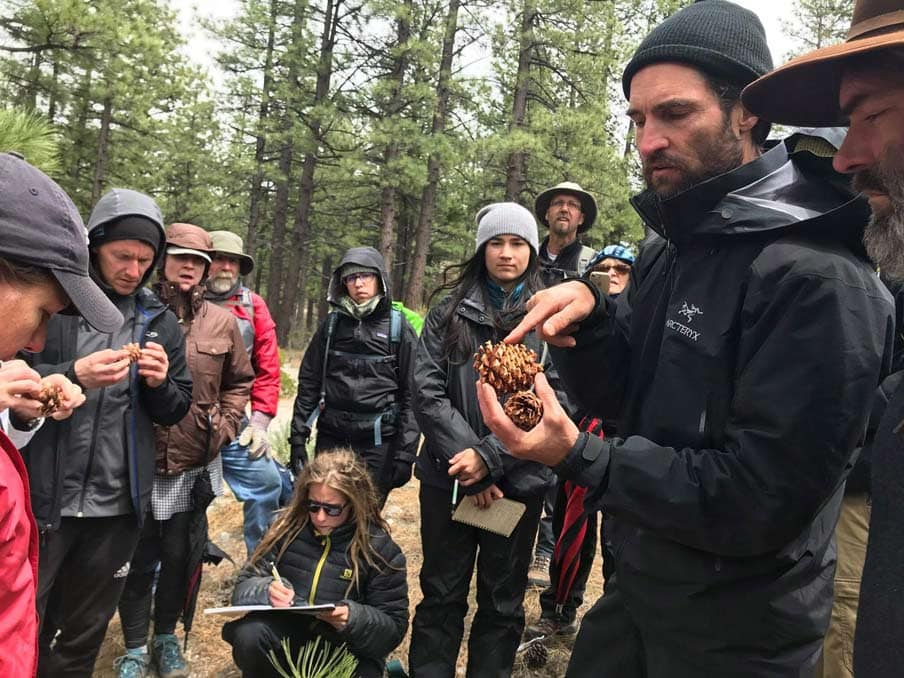
Fenner leads walking field classes and medicine-making workshops locally a few times a year as part of his regional tour.
While locations for the walking tour vary, the focus is typically on the variety of different plant species in the area; natural history; regional ethnobotany (the study of the interrelationship between people and plants); identification of plants and their specific parts that can be used; dangerous and hazardous lookalikes; and ethical and legal parameters.
“We don’t actually pick during the walking tour,” he says. “I talk about how to use the plants, but the last thing I want to do is take them out to pick them because they don’t know botany, toxicology, or the life cycle of the plant. That comes during later programs.”
During his medicine-making workshops, Fenner supplies the ingredients and teaches students how to extract the medicinal compounds to make several items. Every class is different, but the menu may feature teas, cold infusions, hot infusions, herbal oils, salves, and ointments highlighting wild harvested plants from the High Sierra and surrounding areas.
Fenner always provides a list of books and resources for folks to refer to for additional information. On the top of his list are the works by Michael Moore, and he recommends Moore’s Medicinal Plants of the Mountain West as the best for this area. Fenner also hosts virtual herb walks on Facebook and has a robust library of content available on his social media platform.
“I have a really grassroots approach. I teach a couple thousand people a year, and I travel to people, almost like a doctor who does house calls,” he notes. “People can learn from me online and then come take my classes. I’m a modern nomad traveling with the seasons in a diesel van and have recreated the hunter-gatherer mentality in a modern sense. It’s fantastic, and people should always learn more about how plants can help.”
A lover of all things holistic, Heidi Bethel leans toward natural options and appreciates the healthy qualities they bring. As the temperature cools, she adds elderberry syrup to her family’s daily diet.
RESOURCES
Explore the following sites to learn about purchasing locally made herbal remedies and classes offered on the subject:
Sierrarootswellness.com
Sierranvhemp.com
Herb-lady.com
Facebook.com/bluewindschool
Happy Heart Spritzer
(courtesy of Mary McCallum, clinical herbalist and owner of Sierra Roots Wellness in Truckee. Serves 1)
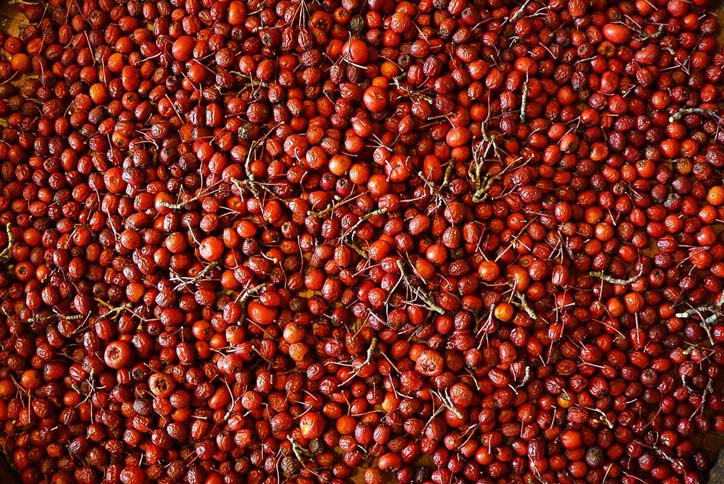
1 cup sparkling water or club soda
2 to 3 tablespoons Happy Heart Oxymel
¼ cup tart cherry or pomegranate juice
Orange slice or cinnamon stick, for garnish
*To make it a cocktail, add vodka or gin!
Pour sparkling water into a glass, followed by Happy Heart Oxymel and fruit juice. Stir spritzer to combine the ingredients. Top with ice and garnish. Feel the heal as you sip on this heart-supportive beverage sip by sip.
Blue Elderberry syrup
(courtesy of Tellur Fenner, instructor with Blue Wind School of Botanical Studies. Makes 32 servings)
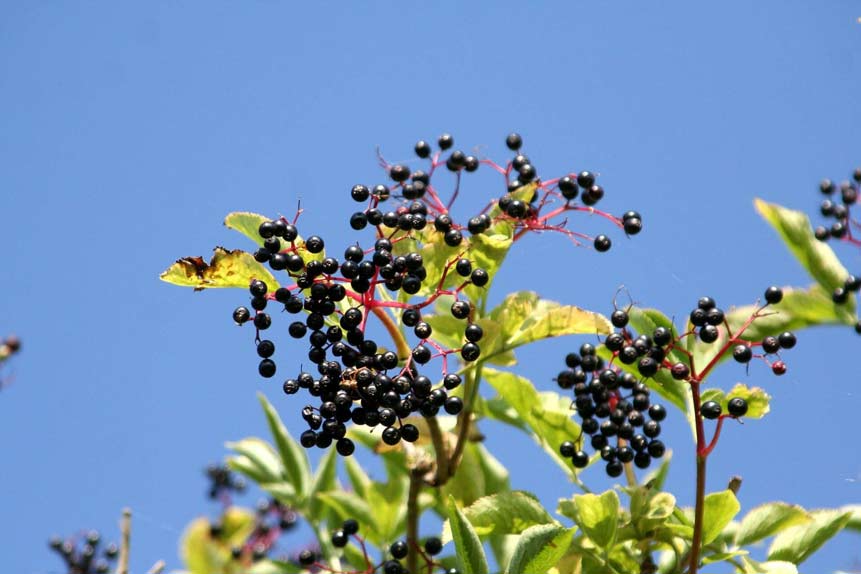
10 ounces fresh blue elderberries, mashed (Fenner recommends Sambucus nigra ssp. Caerulea variety)
10 ounces local, high-quality honey
Put both ingredients in a large jar. Combine, leaving a few inches at top of jar. Secure cheesecloth over mouth of jar with a rubber band. Store at room temperature (60 – 80 degrees F) for one month, stirring daily. Once bubbling and fermentation are complete, strain out seeds and fruit pulp. Bottle and store in refrigerator. Take 1 tablespoon three times per day.
